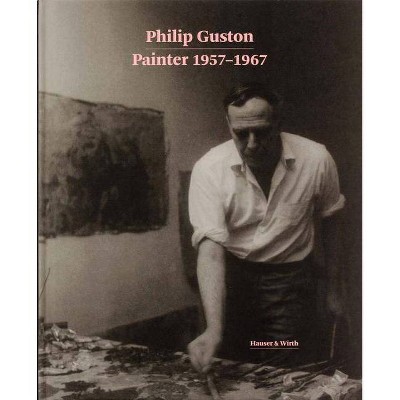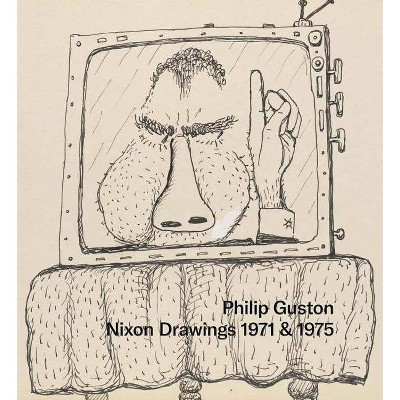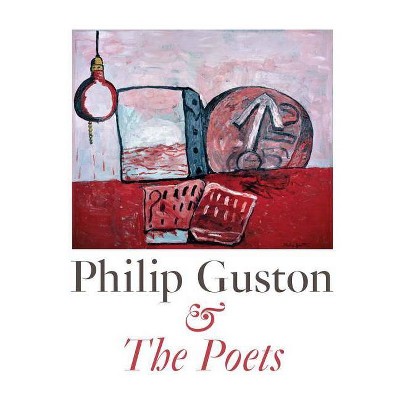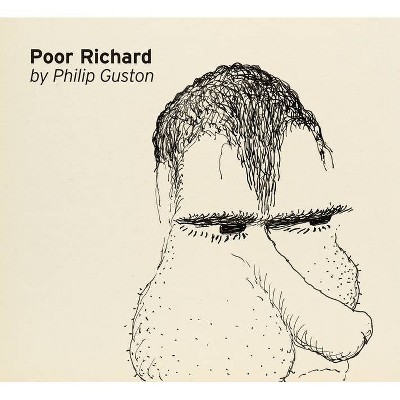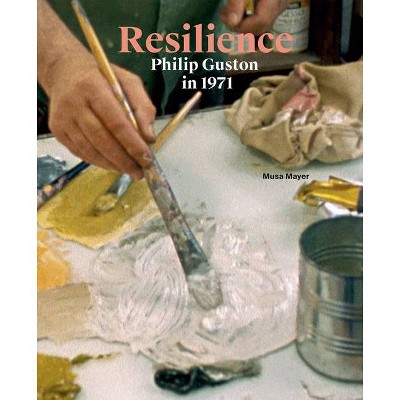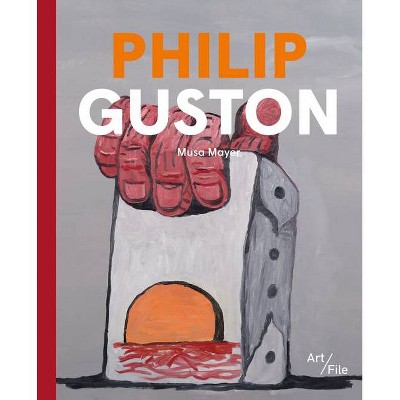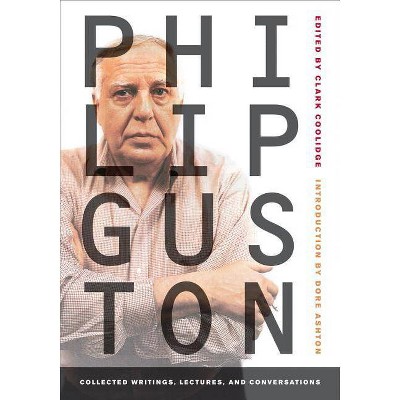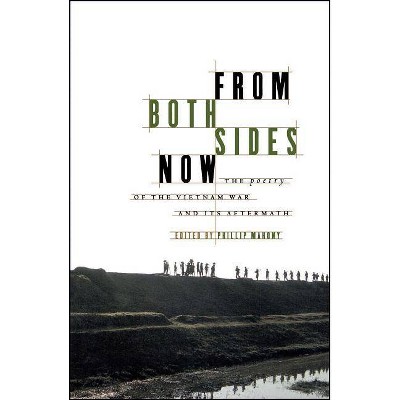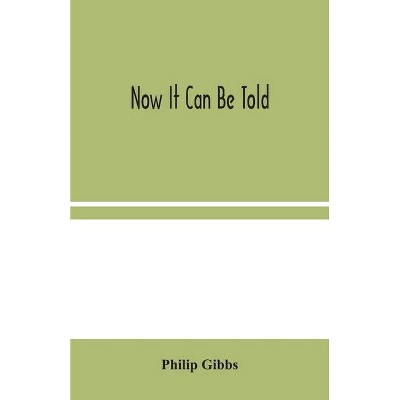Philip Guston Now - (Hardcover)
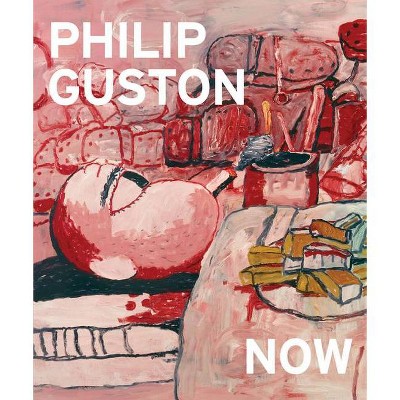
Similar Products
Products of same category from the store
AllProduct info
<p/><br></br><p><b> About the Book </b></p></br></br>"The exhibition is organized by the National Gallery of Art, Washington; the Museum of Fine Arts, Boston; Tate Modern, London; and the Museum of Fine Arts, Houston"--Copyright page.<p/><br></br><p><b> Book Synopsis </b></p></br></br><p><strong>A sweeping retrospective of Philip Guston's influential work, from Depression-era muralist to abstract expressionist to tragicomic contemporary master</strong></p><p>Philip Guston--perhaps more than any other figure in recent memory--has given contemporary artists permission to break the rules and paint what, and how, they want. His winding career, embrace of "high" and "low" sources, and constant aesthetic reinvention defy easy categorization, and his 1968 figurative turn is by now one of modern art's most legendary conversion narratives. "I was feeling split, schizophrenic. The war, what was happening in America, the brutality of the world. What kind of man am I, sitting at home, reading magazines, going into a frustrated fury about everything--and then going into my studio to adjust a red to a blue?" <p/>And so Guston's sensitive abstractions gave way to large, cartoonlike canvases populated by lumpy, sometimes tortured figures and mysterious personal symbols in a palette of juicy pinks, acid greens, and cool blues. That Guston continued mining this vein for the rest of his life--despite initial bewilderment from his peers--reinforced his reputation as an artist's artist and a model of integrity; since his death 50 years ago, he has become hugely influential as contemporary art has followed Guston into its own antic twists and turns. <p/>Published to accompany the first retrospective museum exhibition of Guston's career in over 15 years, <i>Philip Guston Now</i> includes a lead essay by Harry Cooper surveying Guston's life and work, and a definitive chronology reflecting many new discoveries. It also highlights the voices of artists of our day who have been inspired by the full range of his work: Tacita Dean, Peter Fischli, Trenton Doyle Hancock, William Kentridge, Glenn Ligon, David Reed, Dana Schutz, Amy Sillman, Art Spiegelman and Rirkrit Tiravanija. Thematic essays by co-curators Mark Godfrey, Alison de Lima Greene and Kate Nesin trace the influences, interests and evolution of this singular force in modern and contemporary art--including several perspectives on the 1960s and '70s, when Guston gradually abandoned abstraction, returning to the figure and to current history but with a personal voice, by turns comic and apocalyptic, that resonates today more than ever.</p><p/><br></br><p><b> Review Quotes </b></p></br></br><br>A necessary resource for anyone interested in understanding Guston.... What's untimely in Guston is his freedom from the urge, so common today, to seek reassurance of one's own goodness by accusing others of wrongdoing.--Barry Schwabsky "The Nation"<br><br>A sweeping retrospective of Philip Guston's influential work, from Depression-era muralist to abstract expressionist to tragicomic contemporary master. Philip Guston - perhaps more than any other figure in recent memory - has given contemporary artists permission to break the rules and paint what, and how, they want.-- "Antiques and The Arts Weekly"<br><br>[Glenn] Ligon's text is a powerful exploration of Guston's Klansmen imagery, full of nuance, clear-eyed about the complexity and difficulty of addressing the subject.--Ben Luke "Art Newspaper"<br><br>A career-spanning retrospective that looks at Guston's legacy and influence, and includes commentary on individual paintings by William Kentridge, Amy Sillman, Tacita Dean and many others.--Michael Glover "Hyperallergic"<br><br>Philip Guston was a rule-breaking artist, who inspired so many painters as well cartoonists, writers, poets, and musicians, and this book brings together scores of terrific essays by artists and scholars, and a wide-ranging collection of full-color reproductions of his paintings and drawings.... Insightful.--Jake Marmer "Tablet"<br><br>Philip Guston is best known for his incisive, cartoonish paintings and drawings ranging in subject matter from everyday scenes to narrative political satires, particularly those of Richard Nixon. Guston's work received varying degrees of critical praise throughout his lifetime, shifting as he changed course.--Claire Selvin "ARTnews"<br><br>A beautifully illustrated catalogue with essays by the show's co-curators and reflections on his influential work by such contemporary artists as Trenton Doyle Hancock, William Kentridge, and Amy Sillman. Guston created work in a variety of styles and from psychological points of view that continue to impact an evolving art world today.--Paul Laster "Art and Object"<br><br>A satisfying compilation of the late painter's best-known work, as well as some surprises. Assembled for his new traveling retrospective at the National Gallery of Art, this catalogue could function either as an introduction or a point of reentry, giving those with varying experiences with Guston's work a chance to deepen what they know.--Editors "Cultured"<br><br>Beautifully produced ... Philip Guston Now is a fitting and impressively informative survey and analysis of a remarkable artist, his life and his work.--Editors "Midwest Book Review"<br><br>Guston's enduring appeal rests in the permissions he offers artists. He encourages them to drastically change their work in midstream, to examine their personal relationship to evil, to embrace discredited styles and genres, and to accept and even revel in their own ambivalence about the meaning of art.--Editors "Art In America"<br><br>A rousing and reverential guide to understanding the evolution of a painter and why he deeply resonates with such an illustrious audience of artists and patrons today.--Evan Pricco "Juxtapoz"<br>
Price History
Price Archive shows prices from various stores, lets you see history and find the cheapest. There is no actual sale on the website. For all support, inquiry and suggestion messages communication@pricearchive.us
